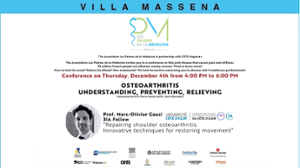on the October 4, 2024
Campus Valrose
Monthly PhD and Postdoc seminar
Program
10:30 - 10:40
Rafael Silva (PhD, Inria)
Flash presentation: Signal Processing and Artificial Intelligence for Cardiac Monitoring
Abstract:
Cardiovascular diseases are a significant healthcare concern worldwide, but diagnosing and predicting outcomes remains challenging. Recent advancements in hardware combined with innovative AI methods offer new possibilities in this field. For example, the heart’s electrical activity can be measured non-invasively and analyzed by AI tools in real-time. This presentation will showcase some signal processing tools and AI algorithms developed for cardiac monitoring applications, along with an overview of the current challenges and other key considerations.
10:40 - 11:00
Eloise Da Cunha (PhD, UCA)
Speech-Based Detection of Motor and Physical Deficits in the geriatric population
Abstract:
Promoting physical activity among seniors is a global priority to extend healthy life expectancy. However, neurodegenerative diseases that involve motor disorders are among the leading causes of loss of autonomy. Early and targeted diagnosis is crucial for providing appropriate care, yet the current symptom-based classifications are too heterogeneous to predict individual symptom progression in the early stages. In this context, this study aims to explore the potential of data-driven acoustic and linguistic markers for the early detection of specific physical and motor deficits. A geriatric population with motor vulnerabilities underwent a complete physical and motor evaluation, alongside the collection of initial acoustic and linguistic markers, consisting of the recording of a one-minute spontaneous speech. The acoustic and linguistic data from this discourse, automatically collected, were analyzed using machine learning approaches to develop a predictive tool for motor and physical deficit detection based on speech parameters only. This approach would make motor frailty symptom detection earlier, more accessible, and more accurate, supporting personalized diagnoses and offering deeper insights into the connections between neurodegenerative pathophysiology and motor symptom progression. By linking motor function and speech, this study seeks to improve early diagnosis and personalized care, ultimately enhancing autonomy and quality of life in the geriatric population.
11:00 - 11:30
Valeriia Rezapova (PhD, UCA)
Computational analysis on mature osteoclast transcriptome revealed the existence of 3 osteoclast lineages with different functional, metabolic and regulatory properties
Abstract:
The bone-resorbing osteoclasts (OCLs) are diverse in their origin and function. Using scRNAseq of mature OCLs (5-6 nuclei) generated from the bone marrow (BM) of sham and ovariectomized (OVX) mice, we previously characterized the 2 most divergent OCL subsets by CD200 and CD16/32 expression and specific metabolic and functional properties that differ between sham and OVX conditions. However, the link between these subsets remains unclear. Thus, our aim was to further characterize these subsets by computational analysis to understand how they are connected.
Clusterization of integrated data revealed of 6 OCL clusters and velocity analysis confirmed presence of all clusters and absence of progenitors. Differential expression analysis highlighted unique markers for all clusters, Over-Representation analysis confirmed 6 OCL clusters having specific gene signature and differential association with various biological processes. Trajectory analysis (Slingshot) split them into 3 lineages with and lineages were associated with metabolisms and expression analysis results. Lineage1 was associated with high Fcgr2b/3 expression. Along lineage 1, pathway analysis showed decreased OxPhos and increased glycolytic capacity, high immune processes but low resorption association, confirming the functional properties we previously reported for CD16/32+ OCLs. Lineage 1 also associated with fusion and fission pathways. Lineage2 had high expression of CD200 and bone resorption markers, association with OxPhos processes but not with immune processes, and low fusion and fission prediction. Lineage3 consisted of CD200+ OCLs having less OxPhos potential compared to Lineage2, but higher resorption and immune capacities, and high association with fusion and fission markers.
The next step of analysis was performing the experiment of OCLs with 3-4, 5-6 nuclei and mononucleated progenitors from the same culture. Bone marrow of healthy mice was taken and proceed the same way as in case of sham OVX experiment, but cells with 1, 3-4 and 5-6 nuclei were sorted. This experiment will undercover the fusion and fission process in OCLs.
In conclusion, using computation methods, we have revealed the existence of 3 mature OCL lineages that differ in their metabolic and functional properties as well as fusion capacity, and regulatory mechanisms, thereby expanding our knowledge of OCL diversity. Further validation is needed, but this identification of the coexistence of 3 OCL lineages opens new perspectives for understanding the mechanisms involved in normal and pathological bone resorption and related to OCL differentiation and activity.
11:30 - 12:00
Open discussion about the two contributions
Event reserved for 3IA Côte d'Azur PhD students and post-docs. ID check at the entrance of the site with visual bag inspection.



